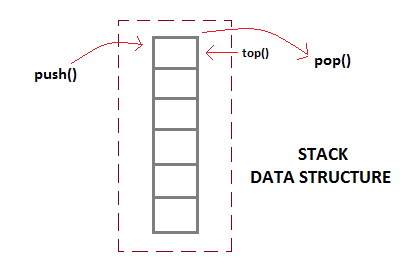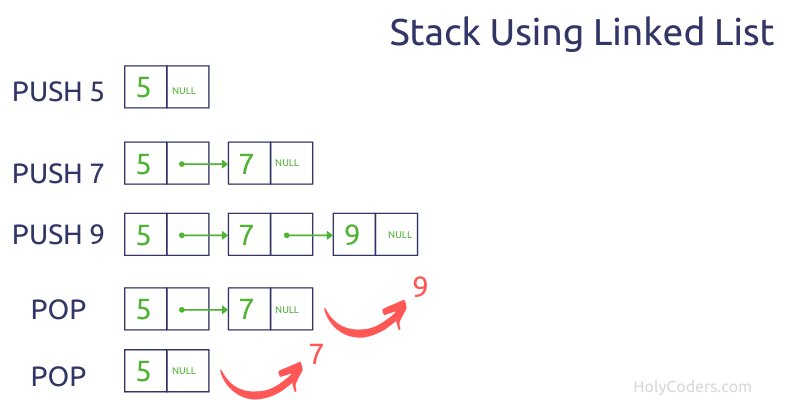
Printf("4. Printf("3.Display all elements of queue \n") Would you have any comments in terms of functionality/ performance/ memory usage include < stdafx.h> in. Printf("2.Delete element from queue (Dequeue) \n") Here is my stack implementation with linked list. Printf("1.Insert element to queue (Enqueue) \n") Printf("***Queue Implementation using Singly LinkedList***\n") Now we can combine the above logic and code.
#STACK IMPLEMENTATION USING LINKED LIST CODE#
} Queue implementation in C Complete Source Code Printf("First element in the queue is:%d\n", front->data) This operation will not remove the element. This function is used to see the element in the front of the queue. We have to traverse throughout the queue one by one. Printf("The deleted element from queue is:%d\n",temp->data) The below image explains the Dequeue process. Set the FRONT pointer to point to the FRONT’s next node.

if new node is going to insert in an existing queueĭelete operation on the queue is to remove the element from the list which was inserted first in the queue. if new node is going to insert in empty queue Temp=(struct node*)malloc(sizeof(struct node)) The below image explains the Enqueue process.

The new element added to the queue becomes the last element of the queue. Inserting an element into a queue takes place at one end of the queue. Structure to create a node with data and next (pointer to next node) We will be using the below structure as a node for our code. REAR is used to track the last element of the queue. We will have to maintain two pointers that are used to track the FRONT and REAR end.įRONT is used to track the first element of the queue. Peek– Showing the first element in the queue without deleting it.Display– Displaying all the elements in the queue.Dequeue– Deleting an element from the queue.Enqueue– Insert an element to the queue.So, Increasing or decreasing the size of the queue is possible in the run time. But in this method, we can allocate the memory dynamically. So, we can’t shrink or increase the size of the queue. The main advantage of queue implementation using a Linked list over an array is, that the array size is fixed. Let's give it a try You have a linked list and you have to implement the functionalities push and pop of stack using this given linked list.

Finally, Node 3’s address is NULL as there is no node to point. And Node 1’s address is pointing to Node 2, Node 2’s address is pointing to Node 3. Here, Node 0 is the head node, and it is pointing to the next node which is Node 1. Delete the temporary node using the ‘free’ function.The above shown Linked List has 4 Nodes (Node 0, 1, 2, and 3).



 0 kommentar(er)
0 kommentar(er)
